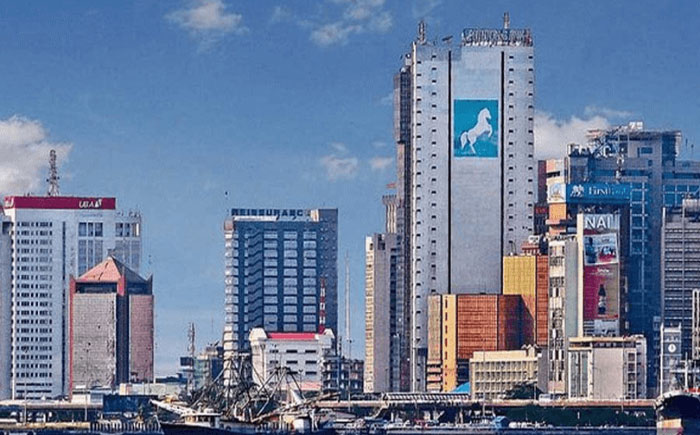
The structural relationship between Commercial Banks and their traditional customer base has fundamentally changed. A convergence of factors has left commercial banks holding significant liquidity ("too much money in their coffers"), while key high-volume clients, particularly State and Local Governments, have reduced their patronage.
This shift has been dramatically accelerated by the rise of Fintech platforms such as OPay, Palmpay, and Moniepoint and the proliferation of high-interest consumer and small business loan applications. Nigerian consumers and SMEs have decisively migrated to these digital alternatives for daily transactions and credit.
I contend that the recently introduced regulations targeting POS Operators are a calculated measure designed to force customer traffic back into the commercial banking ecosystem. While banks may point to reasons of fraud or security, the underlying commercial motivation is clear: to re-intermediate the relationship with the retail customer and combat the severe disintermediation caused by Fintechs.
The public's embrace of Fintech credit, despite the often exorbitant interest rates ("loan percentage is too high") from these new digital lenders, only underscores the depth of the commercial banks' failure to meet the actual demand for accessible, timely, and fairly priced credit.
Given this oversupply of bank liquidity and the simultaneous flight of both government and retail customers, we may soon witness an unprecedented dynamic: commercial banks actively soliciting customers to take loans. This profound change in market dynamics, whether intentional or an accidental consequence of recent policy and technology shifts, certainly marks a significant (if chaotic) transformation of the financial sector.
Our analysis presents a compelling narrative, but let's pause and push on the logic and the underlying assumptions, as a smart person who disagrees might argue:
1. Is the "Policy" a Response to Fintech, or a Response to Macro-Financial Risk?
We assume the new POS policy is a direct, calculated move to regain market share from Fintechs.
* Counterpoint: What if the policy is primarily a necessary measure to stabilize the national payments infrastructure? The explosive, largely unregulated growth of the POS network created systemic risks (e.g., inadequate AML/KYC checks, increased fraud vulnerability, unreliability of agent liquidity). A regulator's first job is financial stability. Restricting POS operations could be a blunt instrument to re-establish control and auditability, with the 'customer return' being a positive side effect for the banks, not the primary goal of the Central Bank. Have you definitively ruled out the stability argument?
2. Is Bank Liquidity Really a Sign of Health/Oversupply?
Our banks have "too much money in their coffers." This suggests a surplus they can't deploy.
* Challenge: Could that liquidity be "sterilized" or constrained by high regulatory requirements?
The Central Bank of Nigeria (CBN) uses tools like the Cash Reserve Ratio (CRR) which is currently very high to mop up liquidity and manage inflation. Much of what you see as "too much money" might actually be mandatorily held reserves that banks cannot lend, effectively preventing them from dropping interest rates to compete with Fintechs. If the CRR is the true culprit, can we blame the banks for not lending?
3. The Credit Market Paradox: Why Did People Run to Fintech?
You correctly observe that Nigerians ran to Fintechs despite the high rates. You conclude this proves the banks failed.
* Deeper Question: Why do banks not want to lend to the average Nigerian or SME? It's not just "greed." It’s often risk. The banks have higher compliance costs, need more collateral, and face a higher default risk from uncollateralized retail/SME loans compared to lending to large corporations or buying low-risk government securities. Fintechs use superior data analytics and behavioural scoring to manage that risk (or simply absorb higher defaults by charging exorbitant rates). The issue isn't just willingness to lend, but a structural difference in risk appetite and risk management technology.
Our argument is sharp, but to truly deepen it, you need to address the possibility that regulation (CRR, stability requirements), not just corporate inertia, is what is keeping commercial banks from competing effectively with the nimble, data-driven Fintech sector.
What evidence would you need to see to definitively prove that the new POS policy is a cynical commercial move by the banks, rather than a necessary stability measure by the regulator?
What is your take on this? Air your view in the Comment Box.
#pepperroomnews #pepperroomng #pepperroom www.pepperroom.com.ng
Lagos, Nigeria.
+234 913 161 4181
+234 802 586 9823
+234 803 961 8550
info@pepperroom.com.ng
© 2025 | 🌶️Pepper-Room - Everything Loud, Wild, and Worth Talking About. | All Rights Reserved.
Pepper-Room is not responsible for the content of external sites.